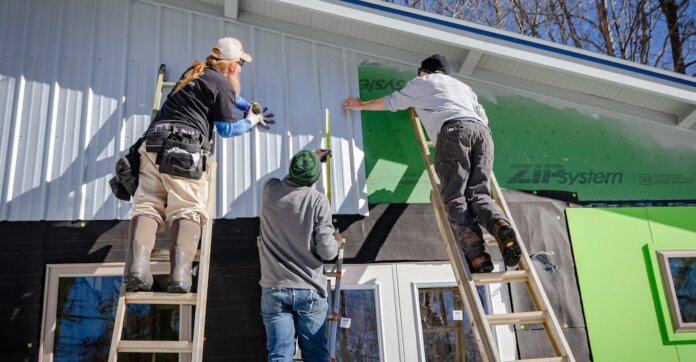Housing starts surged to a seasonally adjusted annual rate of 1.521 million in February, an increase of 10.7% compared with January and an increase of 5.9% compared with February 2023, according to the U.S. Census Bureau.
Starts of detached single‐family homes were at a rate of 1.129 million, an increase of 11.6% compared with January.
Starts of multifamily homes (five units or more per building) were at a rate of 377,000, up 8.6% compared with the previous month.
Building permits also increased in February. They were at a seasonally adjusted annual rate of 1.518 million, up 1.9% compared with January and up 2.4% compared with February 2023.
Permits for single‐family homes were at a rate of 1.031 million, an increase of 1.0% compared with the previous month.
Permits for multifamily dwellings were at a rate of 429,000 in February, an increase of 2.4% compared with January.
Housing completions in February were at a seasonally adjusted annual rate of 1.729 million, up a whopping 19.7% compared with January and up 9.6% compared with February of last year.
In a statement, the National Association of Home Builders (NAHB) notes that pent-up demand, moderating interest rates and a lack of existing inventory helped push single-family starts in February to their highest level since April 2022.
“The solid level of single-family production in February tracks closely with rising builder sentiment, and with mortgage rates expected to moderate further this year, this will provide an added boost for single-family building,” says Carl Harris, chairman of NAHB. “But policymakers need to help the industry’s supply-chains in order to protect housing affordability and add much needed supply to boost inventory.”
“Single-family housing is poised for a good year in 2024 with starts and permits on an upward trend,” adds Danushka Nanayakkara-Skillington, assistant vice president for forecasting and analysis for NAHB. “The uptick in single-family permits is good news for the industry, which was hit hard by tight monetary policy last year. However, builders still face several supply-side challenges in the form of shortages and higher prices for buildable lots and labor.”
In a separate statement, Odeta Kushi, deputy chief economist for First American, points out that “weather can impact starts, so permits can provide a better idea about underlying trends.”
“Permits are a leading indicator of future starts, and there’s also a positive story here – building permits in February were at a seasonally adjusted annual rate of 1.52 million, above consensus expectations,” Kushi says.
“This report aligns with builder sentiment, which improved in March for the fourth consecutive month to its highest level since July,” Kushi says. “Builder sentiment has now crossed the break-even point of 50, indicating positive sentiment. All three of the index’s components increased—current sales conditions rose 4 points to 56, sales expectations in the next six months rose 2 points to 62, and buyer traffic rose 2 points to 34.
“The tale of two markets continues, as the new-home market continues to outperform the existing-home market,” Kushi adds. “Builders have benefited from the lack of resale inventory and from their ability to use incentives, such as mortgage rate buydowns, to entice buyers off the sidelines. Builders have a huge competitive advantage over the resale market in this way. The existing-home market, on the other hand, continues to suffer from a ‘seller’s strike.’
Even if mortgage rates fall down later this year, it’s likely that new home sales will continue to outperform existing-home sales, Kushi says.
“Mortgage rates are expected to recede eventually as the Federal Reserve cuts interest rates, which should result in downward pressure on mortgage rates,” she says. “Lower mortgage rates should support more new- and existing-home sales, but the single-family, new-home market will likely continue to outperform because, unlike existing homeowners, builders are not rate locked-in.”
Photo: Jens Behrmann










